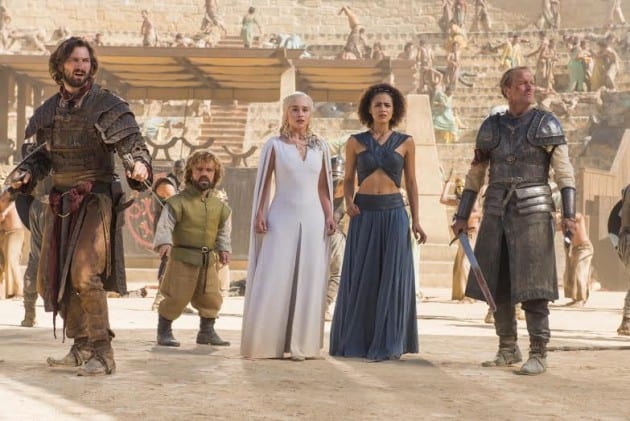
Over and over again, Game of Thrones has shown there’s no victory without loss, no gain without great sacrifice – and often, the show explores the limits of this with characters in power with violent consequences. Season 5 of Game of Thrones has refocused itself around the newly formed (or supremely ancient) of Westeros and forced them all to consider the idea of compromise. Of course, most have rejected this idea: after all, the historical path to power is complete dedication, and with that, comes a lot of death and destruction.
These kinds of ideas we’re used to on Game of Thrones, but as the show matures, the arcs grow larger and darker – no darker than a man burning his own child to show his faith to the Lord of Light, which is exactly what happens when Stannis reluctantly sends Shireen to her death, on Melisandre’s command. It speaks to how strong a character Stannis is that we can feel empathetic for him when he talks to his daughter about the inefficacy of compromise, and at the same time, we’re no less horrified by his decision to follow through with killing her, arguably the only person in all of Westeros he truly loved and cared about. The duality of that choice, despite the horrible result, is compelling, and watching Stannis struggle with the decision is a wonderful example of just how powerful a single idea can be, and how desperate Stannis is becoming to secure his legacy and end the war. He’s willing to put his only child to death, essentially handing his fate over to the woman who looks into the flames, and who I’d be willing to bet saw absolutely nothing in the fires Ramsay Snow set on their camp, burning down their food stores and catalyzing Stannis’ decision to go for the full Burning Hail Mary.
Shireen’s death is not exactly a surprising one, given her character development through the season – not to mention when Davos says farewell to her, which is about as heartbreaking as a foreshadowing scene can be. And it’s supposed to be a shocking one: to this point, it’s been hard to find fault with Stannis, making him one of the stronger favorites to ascend the Iron Throne. Lest we forget, however, he’s gotten here by kidnapping children, using witchcraft to assassinate his own brother, and pretty regularly sacrificing people to the Lord of Light in his reluctant pursuit of what he believes his destiny to be; the death of Shireen brings all of that back to the surface for the character, a cruel reminder of the cost to achieve greatness, and how Stannis as a character feels trapped by Melisandre’s premonitions that he is to be king.
Although their locations and stories are quite different, Dany and Stannis’ mental states in “The Dance of Dragons” are quite similar; and while the latter is an effective way to re-establish the same status quo on the audience, Dany’s story embodies the same ideas in equally traumatic fashion, and yet it ends with Dany in a much more empathetic position than Stannis. Both are using fire to conquer enemies, fire that was rewarded to them as a sign of their faith; Stannis to his crazy religious ideas, and Dany to her dragons, two stories that wonderfully represent the duality GGRM has strived to create in A Song of Ice and Fire. And yet it is Dany’s story that provides the emotional backbone of the episode, her moment of bonding with Drogon brought about by an attempt on her life by the Sons of the Harpy. In comparison to the shuddering horror of Shireen’s death scene, Dany and company being saved by an angered Drogo is a much more exciting scene to watch; and yet, they both come in service of bowing to the powers of fire, showing their capabilities through the show’s extremely violent lens.
It makes for an interesting contrast: although Dany’s entire government and philosophy for running Meereen collapses into a bloody mess at the tournament, the moment is still seen as a victory for the character. By the same token, Stannis’ actions are viewed by the audience as Alliser views Jon Snow: an absolute failure, an empty gesture that can only end badly for the aforementioned men involved. That dichotomy helps to inform other stories fragmented between the two major developments near Winterfell and inside Meereen; like Arya, who struggles with the decision to follow the man of faith, or follow her own ambitions, only allowing the religion of the Many-Faced God to serve as her emotional proxy when needed. Stannis doesn’t talk about the Lord of Light unless he’s in a pickle; equally, Arya is only using the Many-Faced God to train to kill all of those on her list, an allegiance that becomes clear when the armored pedophile Meryn Trant arrives in Braavos to strike a deal with the Iron Bank. As separated as these three characters are, “The Dance of Dragons” lines them all up quite neatly to find the thoroughline of characters coming to crisis points with their faith, an idea that has stretched from beyond the Wall down to King’s Landing and back through the course of this fifth season.
There are still parts of Game of Thrones that aren’t working this season: I couldn’t begin to explain what the hell is going on at Dorne right now, except that it appears the Sand Snakes are willing to keep the Lannister family in their favor, even in the face of a death of a family member. Yes, the story fits in neatly with the “faith in the big picture” conflict introduced to each character this week. However, without a grip on who these characters really are, and what they do besides make cranky faces at each other (or if they’re the three sisters, obsess over their looks), what happens in Dorne boils down to a lot of pretty people talking obtusely for each other; and no matter how neatly it lines up thematically, it represents a major swing and a miss for the show this season.
This is a small complaint, though. “The Dance of Dragons,” while not as strong as last week’s episode, is a fine penultimate episode for the season, one that continues to benefit from an allegiance to less storylines and locations per episode, which allows for much more satisfying arcs for major characters, setting the table for others to complete their arcs next week, while still leaving us with some fantastic cliffhangers (does anyone really expect to see Tyrion again this season?). With Drogon under Dany’s control and the White Walkers marching south, the battle between fire and ice is finally beginning, and with “The Dance of Dragons,” Game of Thrones continues to discover exciting, emotionally resonant ways to convey this.
Other thoughts/observations:
– Jorah’s redemption is a beautiful moment, one of the more satisfying moments of a long, dark season.
– Always love watching Tyrion during big battle scenes, with his eyes widened trying to shrink his stature just a liiiiittle bit more. Plus, I would love to see a Missandei/Tyrion traveling duo story in Season 6.
– With Shireen gone, Jorah remains the one character living with grey scale. Will this be important in the future?
– Olly gives Jon the stink eye at Castle Black, which makes Jon sad. Nothing to comment on here, except how this relationship is obviously important, and the snow-covered scene at CB was gorgeous.
– Yes, Dany riding her dragon explores the limitations of the show’s visual FX: still an awesome moment. Though if you were Daario, would you be upset she just left you there?
– Shireen talking to her father about the war between the Targaryen brothers, and how she wouldn’t be able to choose between the two, might be the best scene of the season. Her naivete, Stannis’ resignation, the overwhelming evidence that every choice is a wrong choice… it’s a very strong scene, and one that gives voice to the show’s philosophy about war, and how choosing sides (closing one’s mind in the process, shutting it off to other ways of thinking) always has horrible results, no matter who “wins.”
[Photo credit: Nick Wall/HBO]
 Follow Us
Follow Us
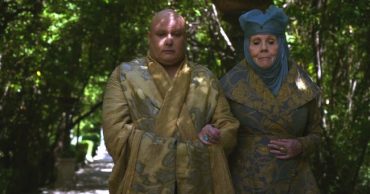
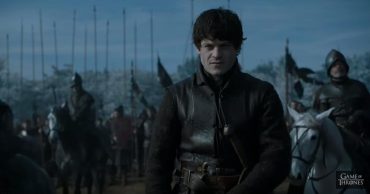

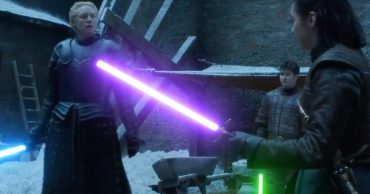

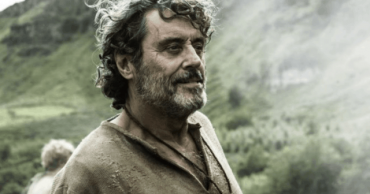
“It speaks to how strong a character Stannis is that we can feel empathetic for him when he talks to his daughter about the inefficacy of compromise”… Really… All I saw was a total douche failing to be straight up with his loyal, wonderful, dedicated, honest, and innocent daughter… who was proud to help in any way she could. #F***Stannis. Also, the more I think about it I feel like Ramsay IS a red herring and the fires were dark magic… something about the look on her face and the way the fires started popping up… also the crazy burning horse seems like symbolism that could relate to something unearthly causing the chaos… Just my two.
“Both are using fire to conquer enemies” You could make the case also that both are sacrificing their children for the sake of power. The free people call Dany Mother… and she is sanctioning murder in the pit to appease opposition. Stannis is appeasing his God… Dany’s sacrifice was worthless and her “true child” came to her rescue, risking his own safety for his mother… Stannis has no more children, so his sacrifice is Shireen coming to his rescue as alluded to in the scene where she says she wants to help any way she can (though she has no idea…). Now, I don;’t want her death to be worthless (like opening the pits was)… but I don’t want Stannis to succeed… F*** Stannis. He is dead to me.